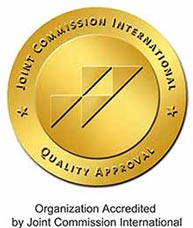 ENT department - main page >
ENT department - main page >
Medialization of the vocal cord
Medialization of the vocal cord is a procedure that is used to correct a voice disorder.
Vocal cords are folds of tissue in the throat that are key in creating sounds through vocalization. In order to create a sound, when air is exhaled, the vocal cords meet and their lining that is covered with mucosa is vibrating. When a person breathes the vocal cords are moving apart to allow air passage. To prevent food from entering the lungs (aspirations), the vocal cords cling fully when the person swallows
Paralysis of the vocal cord
Paralysis of the vocal cord means that one of the vocal cords does not move. Paralysis is often caused by nerve damage that controls the movements. Damage to the nerve may occur throughout the nerve pathway: In the brain - a variety of causes including stroke, neck, tumors, bruises, and surgeries, including thyroid tumors, in the thorax, as a result of surgery or growth. Sometimes the cause of paralysis is not known.
Symptoms
- The following symptoms of paralysis may occur:
- Hoarseness, expressed in a weaker voice and it’s poor quality.
- Swallowing disorders. Since the food "slips" between the vocal cords and causes aspiration. A cough and shortness of breath might occur. When multiple aspirations happen this may lead to development of pneumonia.
Diagnosis
In some patients in the first year after the injury, the voice improves spontaneously without treatment because the healthy vocal cord "learns" to move beyond the mid-line until there is complete closure of vocal cords, thus compensating for the lack of movement of the paralyzed side. It is sometimes possible to improve this process by means of speech therapy, which aims to strengthen and train the functioning vocal cord and improve the control of air flow when speaking, when the compensation process does not occur or does not sufficient, two methods of treatment are on a table - injection or open surgery.
The injection technique
In the injection method, the physician injects a synthetic or human material to the paralyzed vocal cord. This material adds more volume to the vocal cord, bringing it to the midline, allowing the healthy vocal cord to stick to the injected cord. This is temporary because our body absorbs and breaks down the injected substance usually within 3-12 months. The injections can be repeated as needed.
The surgical technique
Moving the paralyzed vocal cord to the center in an operation called thyroplasty. A piece of synthetic material is inserted through the incision through the neck, pushing the vocal cord to the center. This allows the healthy vocal cord to reach the contact with the paralyzed one.
After care
The voice quality changes after treatment and stabilizes within 2-4 weeks. Your doctor or nurse will advise you on how to proceed after treatment. Some general guidelines to follow:
- Use as little voice as possible to allow the vocal cords to heal.
- Avoid whispering, which will increase the friction of the vocal cords
- Avoid coffee, fried, sour and spicy foods, garlic and onions.
- Avoid eating 3 hours before sleeping.
- Sleep with head lifted.








